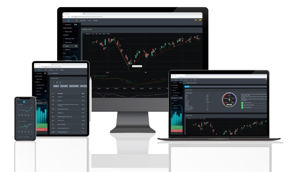Guide to Technical Analysis
There are a lot of ways to analyze whether an investment is good or not, or when you need to buy or sell it. The general economy, economic statistics, financial statements, and metrics can all be helpful considerations to weigh when looking at a new purchase, whether a stock or some form of security.
However, one of the key ways analysts and investors identify good investments is through the use of technical analysis. In contrast to its rival's fundamental analysis, the technical research assesses trends and price movements in order to analyze the viability of a potential investment.
As futuristic as divination of the future of digital currencies may seem, attempts to do something similar in other financial markets have a long history. First of all, relying on intuition and hand-drawn graphic representations of data, early technicians were at worst con artists.

What is Technical Analysis?
The Technical Analysis of Stock Trends was the very first cornerstone to develop a methodology for analyzing the predictable behavior of investors and markets. It reshapes technical investment approaches and demonstrates traders and investors how and when to make money, irrespective of what the market does. An important reference point for skilled merchants, creditors, and finance practitioners.
Technical analysis is a method used to analyze and forecast future stock prices by looking at issues such as price fluctuations, maps, patterns, the scale of trade, and other variables. In comparison to the fundamental research, the technical analysis relies on market signals to delineate successful investing and trade opportunities by analyzing financial patterns by trading data and other statistical elements.
Historical Background
From Edo-period Japan fast forward to the late 19th century when inventions such as the ticker tape prompted information about US financial and commodity markets to proliferate. Chicago commodity traders actively watched demand shift, trying to predict the actions of shares, pools, and rings that are the main market players of the day. Meanwhile, in New York, financial analyst Charles Dow built stock price indices to research market trends as interest in Wall Street rose.

Using his railroad and industrial equity indices, Dow outlined what became known as "Dow Theory" in his founder's publication. After Dow 's death in 1902, acolytes expanded their ideas and sought to take advantage of markets by driving out trends before leaping on the ship when they identified a reversal. The followers of Dow used charts to identify these opportunities. In doing just that, they were often put in the same camp as charlatans and snake oil salesmen.
"We see a lot of pitiful characters coming from one broker 's office to the next," Dow theorist H.M. Gartley wrote in 1938, "with a few be smudged maps under their belt, showing just what the economy is going to do. When challenged, they have several justifications as to why their previous judgments were wrong. "The risk of being associated with the villains they dubbed "chartists" failed to preclude the majority of Dow theorists.
Classic chart patterns such as the head and shoulders, flags and pennants, and the golden and dead crosses are probably more familiar to today's technical analysts. Not all the work of the Dow theorists was false, though. A key weapon in their arsenal was a shifting-average crossover, a signal that several have since discovered empirical evidence.
How to use Technical Analysis
The basic premise of this methodology is that the market price reflects all available information that could have an impact on the market. As a consequence, the need to look at other factors such as fundamentals, news, etc is reduced as price action is the name of the game. Economic analysts typically agree that markets are changing in patterns and that market patterns tend to have some repitition. The two major types of technical analysis are chart patterns and technical (statistical) indicators.

Chart patterns are a subjective form of technical analysis where technicians try to identify areas of support and susceptibility on a chart by looking at specific patterns. These patterns, underpinned by psychosocial processes, are designed to predict where prices are heading after a break-out or a break-down from a specific price point and time. Technical indicators are visual aid where technicians apply various mathematical formulas to prices and quantities. The most well-known technical metrics are legislative compliance, which smooths market data and makes it easy to do identify patterns. Most trading processes are based on technical metrics because they can be quantitatively measured.
Technical Analysis vs. Fundamental Analysis
In contrast to the technical analysis, the fundamental analysis focuses on the inherent value of the security-based on things such as the company's financial statements, the overall economy and market conditions, and other factors such as total assets. While technical analysis concentrates on price fluctuations and the volume of security, the basic analysis focuses on how feasible the company is at a fundamental level. Fundamental analysis is often both qualitative and quantitative in that it examines that both numbers and the greater factors that could affect the value of an investment, such as interest rates, competitive advantage, and the economy as a whole. And, unlike the technical analysis, which focuses mainly on the price trends of safety, the fundamental analysis aimed to identify the fair market value of that security and the location of that security.
Technical Analysis Assumptions
Technical analysis is based on several underlying assumptions that it uses to examine stocks and securities:
History Repeats Itself
One of the key principles of technical analysis is the implication that history repeats itself, particularly with regard to security prices. As a result of this assumption, technical analysis often looks at chart patterns to track how the market operates over time and how prices change, using this as a potential predictor of future price fluctuations.

Technical Analysis Basics
Given that technical analysis focuses on price, movement, volume, and trends, there are a number of fundamental aspects and charts that technical analysts are looking at rather than things like financial statements that fundamental analysts are looking at.
What are some of the basics of technical analysis and how are they used to analyze stocks?
- Price - The price of a security is one of the most important factors examined by the technical analysts. In addition, market action is the primary factor taken into account when performing a technological review. Technical analysts begin by analyzing charts that display the security price and trading volume to note its recent performance and help forecast future movements.
- Chart Patterns and Analysis - As the main focus of technical analysis, chart patterns are one of the main ways analysts analyze and predict where stocks or security will trade along the road. One of the most critical aspects of the technical analysis charts is then the-called trend line, which shows the overall price pattern of protection.
- Volume - Volume is essentially the sum of shares or bonds that exchange for a given amount of money for a certain period of time. For technical research, looking at the volume of the stock or security can help analysts evaluate the intensity of market fluctuations or patterns by showing the number of shares being exchanged in that direction.
- Trending - For a technical analyst, the pattern is perhaps one of the most significant measures of potential supply and security efficiency. Technical analysis rewards examining historical trends to predict what the stock price might do in the future.
- Momentum - Momentum improves the rate at which price changes or movements of a particular stock or security occur. Often combined with the so-called relative strength index (RSI), the momentum tracks and calculates the rate of price rises or declines over a given period of time.
- Support and Resistance - Support is at a level where the demand for a stock is high enough to usually discourage the level from dropping below the threshold. Resistance, on the other hand, is the stage that the sellers of the stock will come in a dump of their shares, preventing the defense from going over a higher level.
Wrap Up
The goal of technical analysis is to help an investor make sense of price movement and action. Price is the secret to success in investing in the stock market. The benefits of technical analysis is that it can be extended to almost any trading instrument and at any time frame. Technical analysis can be used to analysze stocks, commodities, interest rates, forex, bonds, etc.




